
Carmara is a monotypic moth genus of the family Noctuidae. Its only species, Carmara subcervina, is found in Sri Lanka, Japan, Taiwan, Borneo and Australia. Both the genus and species were first described by Francis Walker in 1864.

Claterna is a monotypic moth genus of the family Noctuidae erected by Francis Walker in 1858. Its only species, Claterna cydonia, was first described by Pieter Cramer in 1775.
Nolasena is a monotypic moth genus of the family Erebidae. Its only species, Nolasena ferrifervens, is found in India, Sri Lanka, Borneo and the Philippines. Both the genus and species were first described by Francis Walker in 1858.
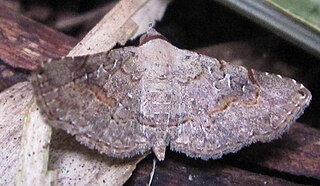
Rhesala is a genus of moths of the family Erebidae. The genus was erected by Francis Walker in 1858.

Suana concolor is a moth of the family Lasiocampidae first described by Francis Walker in 1855. It is found in India and Sri Lanka, to South China, Java, Borneo and the Philippines.
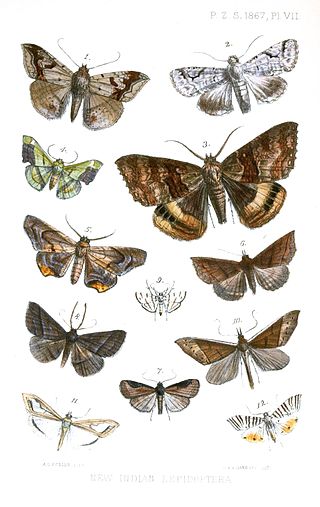
Bamra albicola is a moth of the family Noctuidae first described by Francis Walker in 1858.

Bamra mundata is a moth of the family Noctuidae first described by Francis Walker in 1858. It is found in India and Sri Lanka, Caterpillars are known to feed on Albizia and Arachis hypogaea.
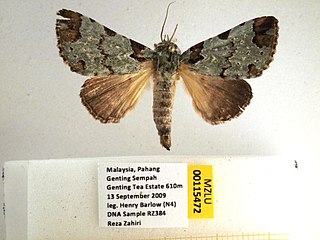
Belciana biformis is a moth of the family Noctuidae first described by Francis Walker in 1858.

Diomea rotundata is a moth of the family Noctuidae first described by Francis Walker in 1857. It is found in Sri Lanka, the Indian subregion, Taiwan, Sumatra, Borneo, the Philippines and Sumba.
Egnasia accingalis is a moth of the family Noctuidae first described by Francis Walker in 1858. It is found in India and Sri Lanka.
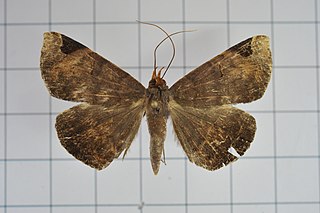
Mecodina praecipua is a moth of the family Noctuidae first described by Francis Walker in 1865.

Nagadeba indecoralis is a moth of the family Noctuidae first described by Francis Walker in 1865. It is found in Sri Lanka, Java, India, Myanmar, India's Andaman Islands, Japan and Taiwan.

Olulis puncticinctalis is a moth of the family Noctuidae first described by Francis Walker in 1863. It is found in Borneo, Peninsular Malaysia, the Andaman Islands, India, Sri Lanka, Taiwan and Japan.

Anomis mesogona is a moth of the family Erebidae first described by Francis Walker in 1857. It is found in India, Sri Lanka, Somalia and Japan.
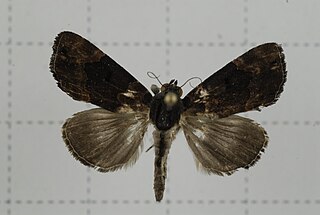
Dinumma placens is a moth of the family Erebidae first described by Francis Walker in 1858. It is found in the Indian sub-region, Sri Lanka, Thailand, China, Taiwan and Japan.
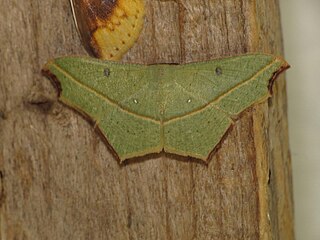
Traminda aventiaria, the cross-line wave moth, is a species of moth in the family Geometridae. The species was first described by Achille Guenée in 1858. It is found in the Indian subregion, Sri Lanka, to Hong Kong, Taiwan, New Guinea and Australia.

Callyna monoleuca is a moth of the family Noctuidae first described by Francis Walker in 1858. It is found in Sri Lanka, India, China, Japan, Taiwan, Myanmar, Indonesia, New Guinea and Australia.

Hipoepa biasalis is a moth of the family Noctuidae first described by Francis Walker in 1859. It is found in Oriental tropics of India and Sri Lanka to Taiwan, Sumatra, Borneo, the Philippines and Sulawesi.
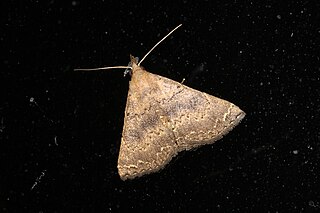
Progonia oileusalis is a species of moth in the family Noctuidae first described by Francis Walker in 1859. It is found in Sri Lanka, Borneo, India, Taiwan, Japan and the Philippines.
Selepa celtis, called the hairy caterpillar as a larva, is a moth of the family Nolidae. The species was first described by Frederic Moore in 1858. It is found in Oriental tropics of India, Sri Lanka, Taiwan towards the Ryukyu Islands and Australia.

















